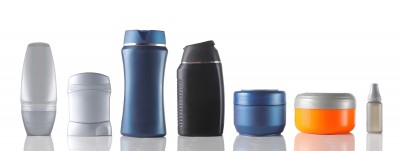Cosmetic Labels: What’s In Those Jars?

Most cosmetics, as it happens, fall within the FDA’s legal purview. Back in 1977, legislation on labeling cosmetics took effect. But how effective is that labeling legislation?
Most of us have more or less come to trust ingredients labeling. We’ve gotten thoroughly used to it in the labeling of foods. Most take for granted that, on a cosmetics label, the ingredients will be listed in their order of predominance in the product. We assume that the ingredient listed first is the one present in greatest quantity, the second listed is the one having the second largest percentage, and so on. But it isn’t necessarily so.
Descending Order Loophole
This descending-order rule in labeling applies, only to ingredients making up one percent or more of what’s in the product. The manufacturer can list in any order any ingredients present which make up less than 1%. The trouble: We can’t know, just from reading the label, where the bigger percentages end and the “less than 1%” ingredients begin. So we can’t know, therefore, the significance these less prominent ingredients carry in a product’s formulation.
Trade Secret Exemption
That’s just the beginning, however. Some kinds of ingredients are effectively exempt from requirements to disclose what’s in them. Read any cosmetics label, and you’ll likely see words like flavor and fragrance. That’s unobjectionable in itself, till we get to the point: The ingredients in flavorings and fragrances don’t have to be disclosed - at all! The same is true of any “trade secret” ingredients.
Dig deeper into FDA regulations, and you’ll see a provision which might at first feel reassuring. A manufacturer can’t simply call anything and everything a “trade secret ingredient.” The regulations purportedly place the burden on the manufacturer to justify a claim that something is a “trade secret ingredient.” They must provide to the FDA a “full statement of the factual and legal grounds for the request” that an item be treated as a trade secret. But once the company wins that one, they’re good to go.
Rules Only Apply to Retail
Then there’s another loophole as big as a barn door. These ingredient-declaration rules apply only to the kinds of cosmetics items you’ll see sold at retail. What’s sold only for use in “professional establishments”—your hair salon, for example—isn’t covered by the same regs. Nor, for that matter, are any products distributed as free samples.
What's "Insignificant"?
Sometimes, the very wording of FDA cosmetics labeling legislation is at fault. Consider masking agents—ingredients used in a product to cover or disguise what would otherwise be an objectionable flavor or aroma. So long as such an agent is present at an “insignificant level,” its presence needn’t be mentioned at all.
That concept of insignificance—a fuzzy a notion—crops up in several ways. For instance, material which “has no technical or functional effect” in the product is considered insignificant. Preservatives come immediately to mind. A second way “insignificance” comes up: when some substance, on its being added in the formulation process, becomes chemically converted to some other ingredient declared on the label. Sodium hydroxide is an example—nasty stuff, by itself, though it converts chemically to things more inert when dropped into products where it’s used as an additive.
I’m not a chemist. I’ll admit that. But even this brief examination of cosmetics labeling laws clearly demonstrates … There are legal loopholes. There are questionable exemptions. And there is vagueness. All of these add up to one unmistakable reality: You can’t truly trust cosmetics labeling—not given the current state of law and industry.
What to Do?
So what or who can you trust? Two answers …
One … cosmetics you make yourself, from ingredients you know are natural and safe. There are plenty of easy, even fun, recipes for making your own high-quality, all-natural cosmetic aids. See my prior Blog article: Homemade Cosmetics.
Two … Buy from small, reliable manufacturers who use their products on themselves.
